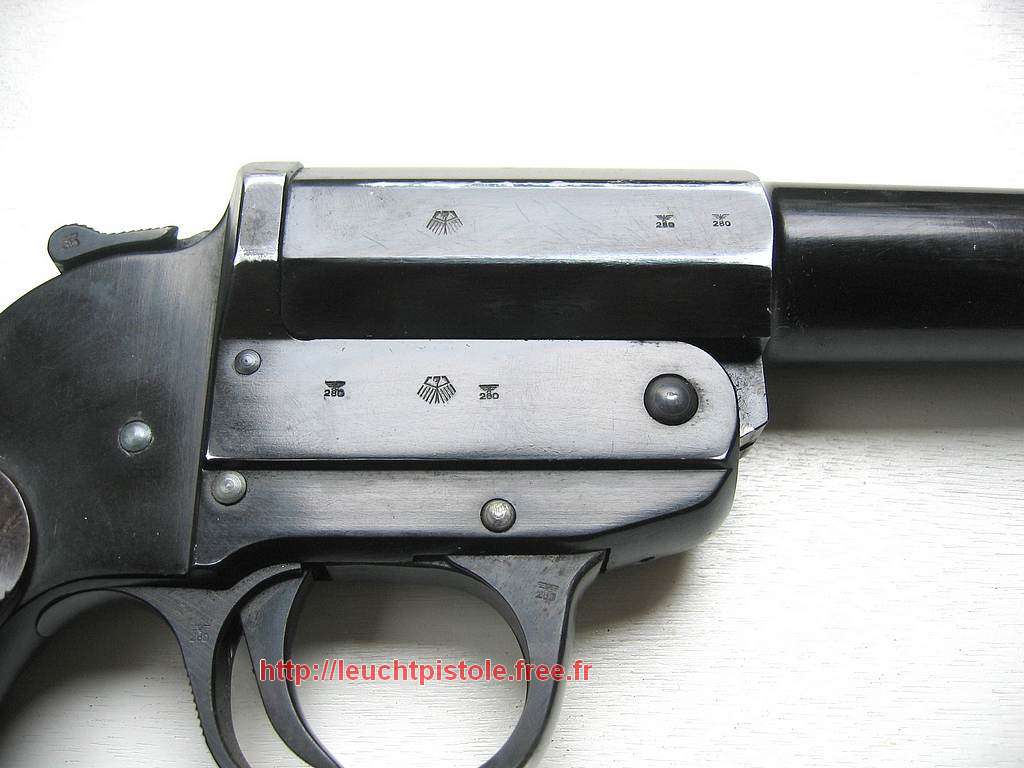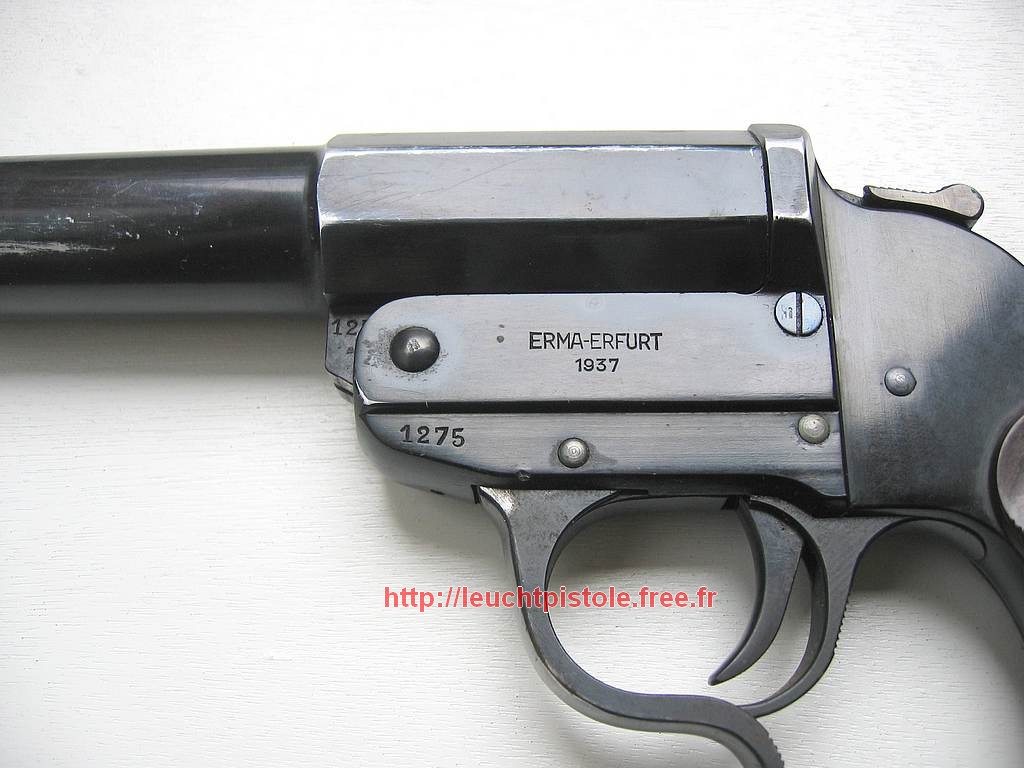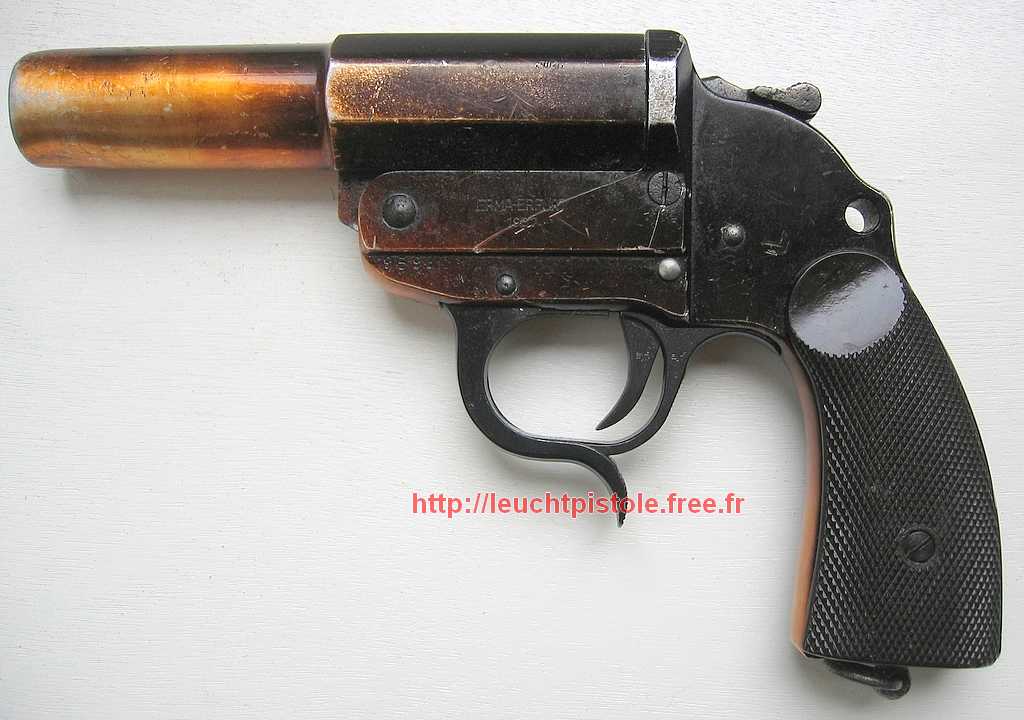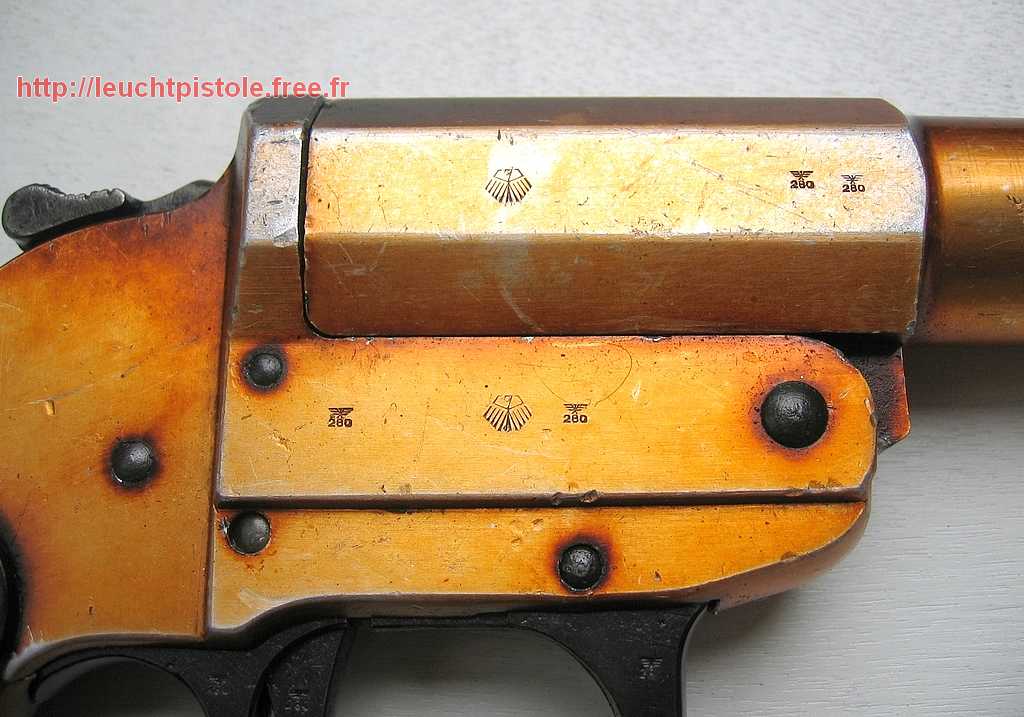The 34 Heer model
The second variant of the Heer
model has to wait until 1934 to appear.
It keeps the same characteristics as the old one (model 1926) but undergoes
some improvements.
Indeed, the construction material used is the duralumin which allows a
reduction in the weight 0.730 kg and partially prevents internal corrosion of
gun powder residue; machining of parts is also improved compared to steel used
in the previous model, the wood of the grips has been replaced by Bakelite
brown or black, the trigger is extended so that the gun can be used with a
gloved hand (e.g. when combat in unfavourable weather conditions like snow).
The carcass and the canon of the PLF is anodized black while moving parts are
tanned.
The opening of the flare gun is
done by pushing forward the lever before the trigger.
The cartridge may be inserted in the chamber; the barrel can be rotated in the
opposite direction until his deadlock.
The hammer can then be manually armed and artifice hit by pressure on the
trigger.
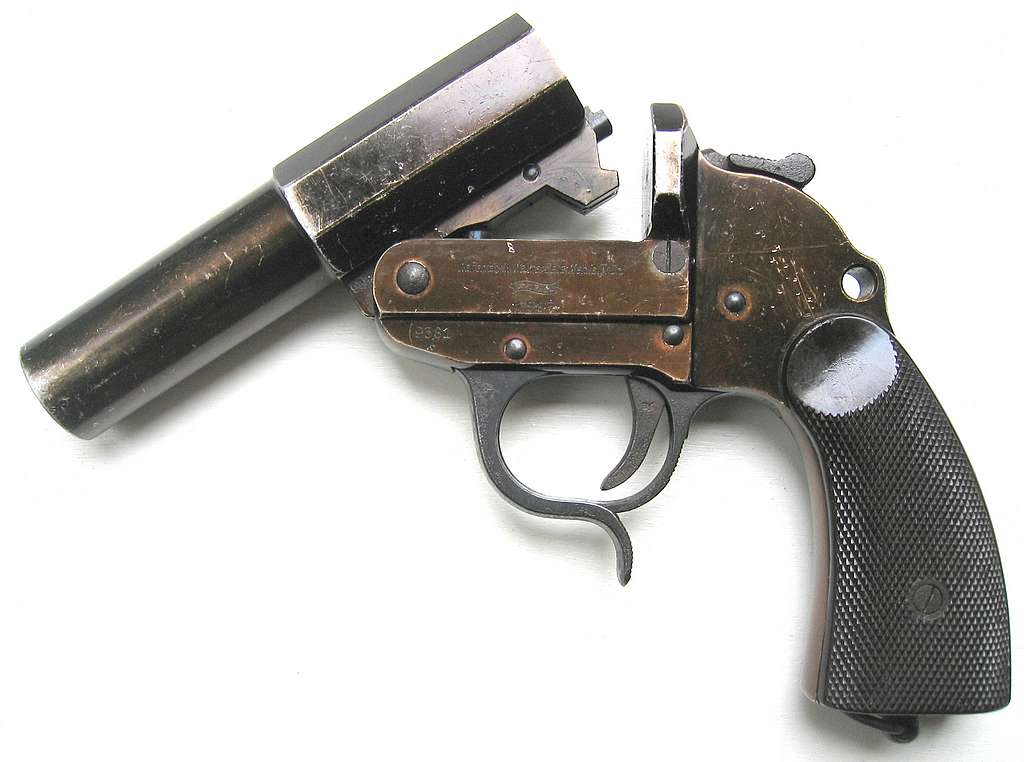
The Mod. 34 Leuchtpistole:
Note that the leading manufacturer Walther is met so that the pistol signaller
is often referred to as Walther pistol).
|
Manufacturer |
Code |
Estimated production |
Remark(s) |
|
Waffen
fabrik Carl Walther, Zella-Mehlis/Thüringenn |
Walther banner overcoming the date of manufacture |
? |
|
|
ERMA in ERFURT |
ERMA-ERFURT |
|
|
|
Bernard Berhauss in Lübeck |
S/237 |
|
|
Some pictures will be more meaningful than a long and uninteresting writing.
We will notice that the two first models (respectively dated 1934 and 1937)
have hallmarks of acceptance (U and S) stamped on the right side of the weapon
(gun and block) and are the same. After these dates, they will receive
Waffenamt it may be seen from the various German guns.
We also observe in the models below, the evolution of the markings of the
German eagle (1937, 1938, 1938, 1942 and 1943):





Steel Model with nice finish, dated 1934. This model still has
some wooden grips and has still his important weight compared to the other
below.

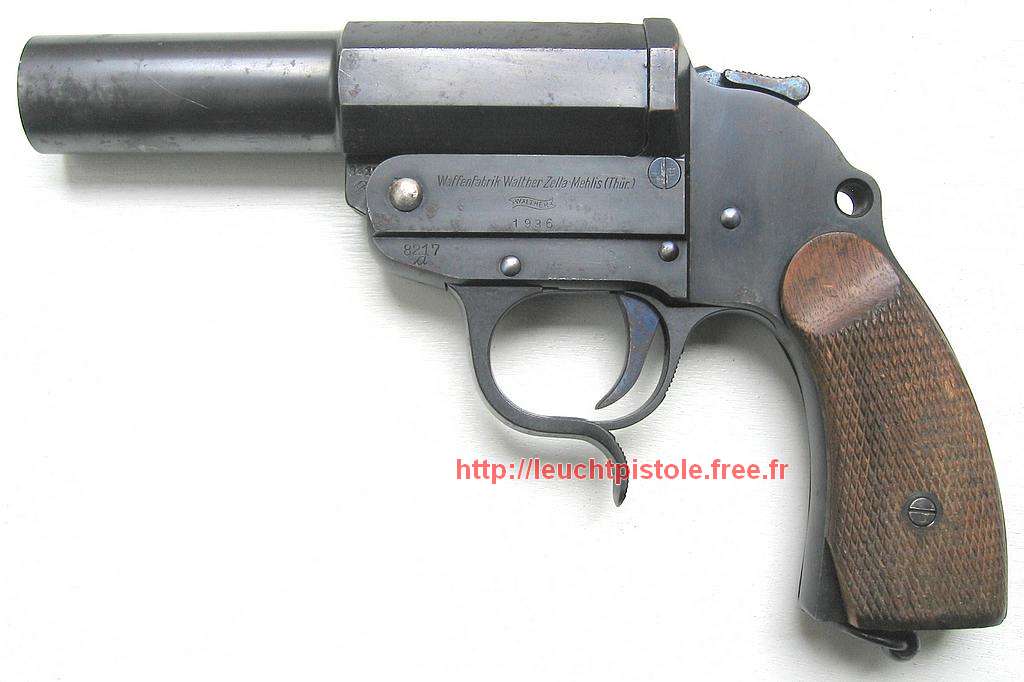


Other pictures:
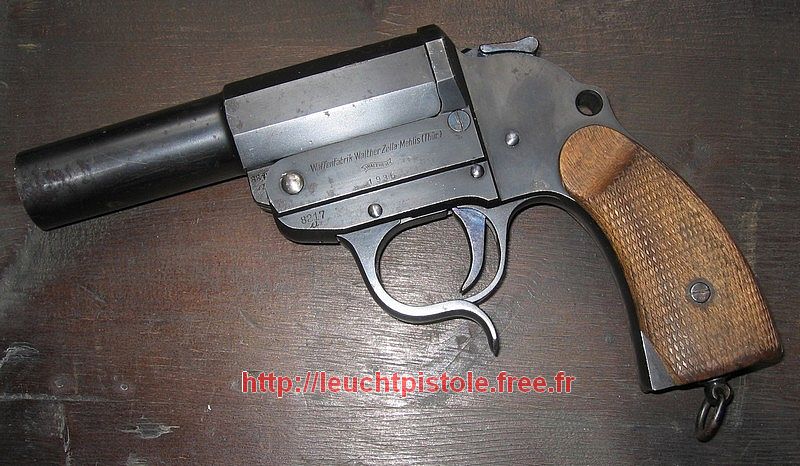




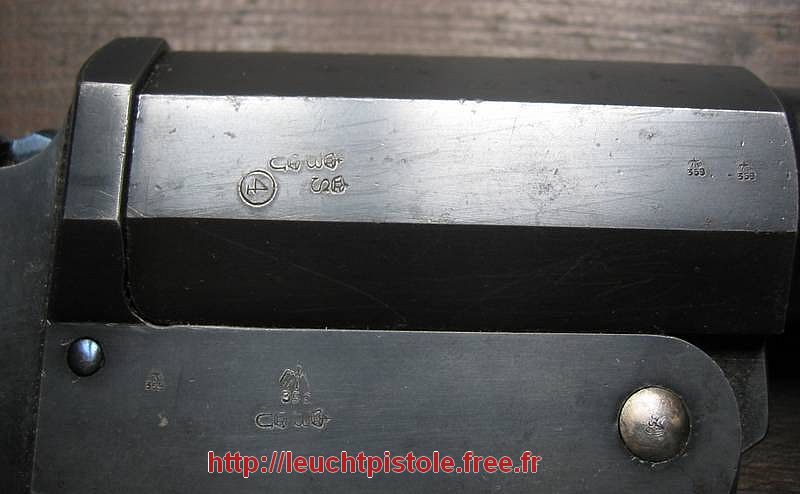



Model later dated 1937. The finish is more straightforward. Tanning has
been replaced by a anodizing. The steel was replaced by duralumin (alloy mainly composed of aluminum, copper and
magnesium).
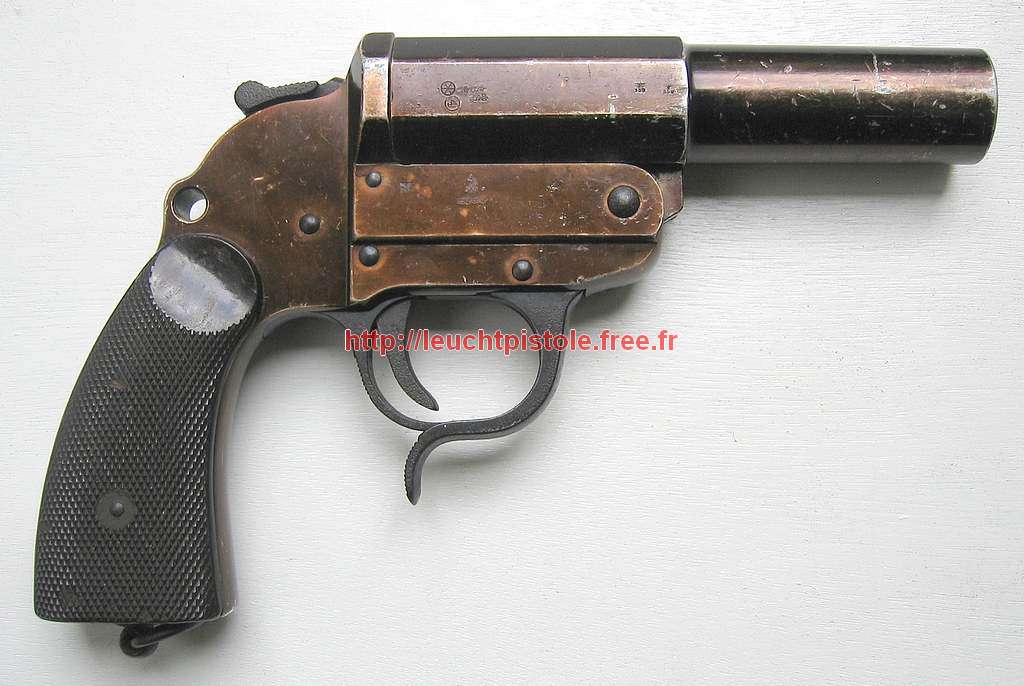
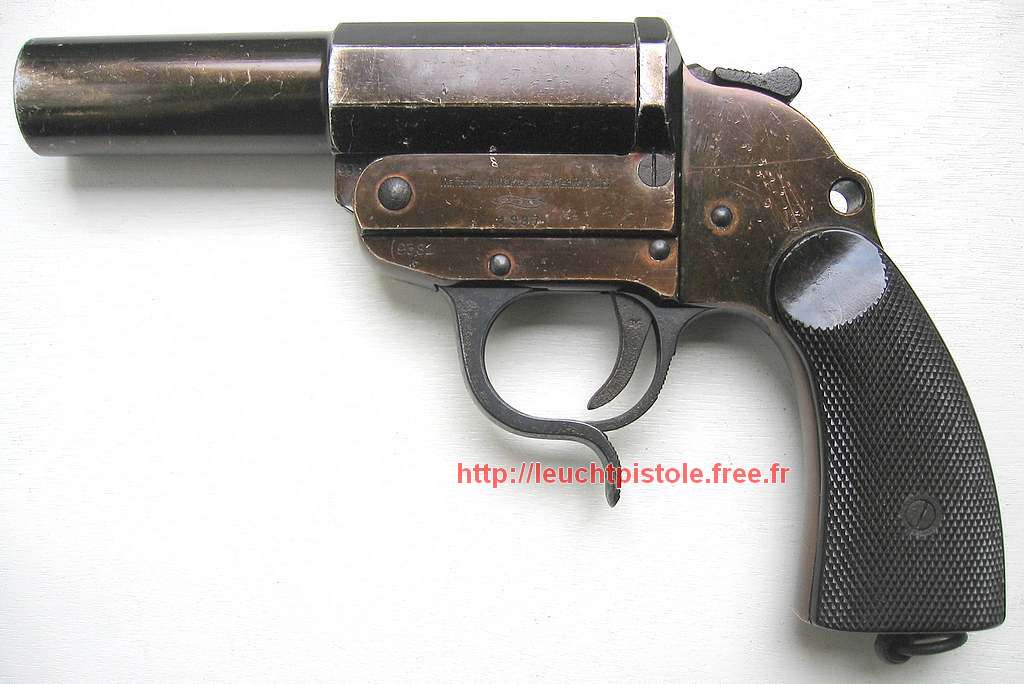


Other pictures:
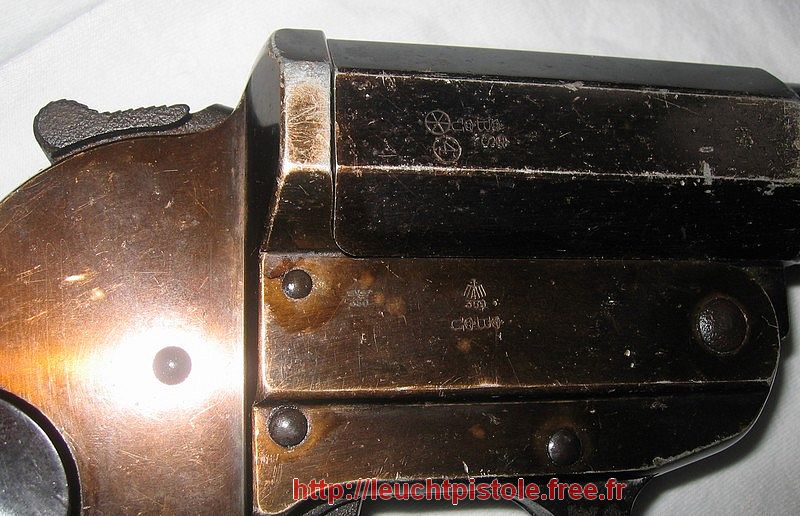



Model later dated 1938. The code is for S/237 Bernard Berhauss in Lübeck.
When getting older, anodizing is giving a yellow color on one side of the
gun.


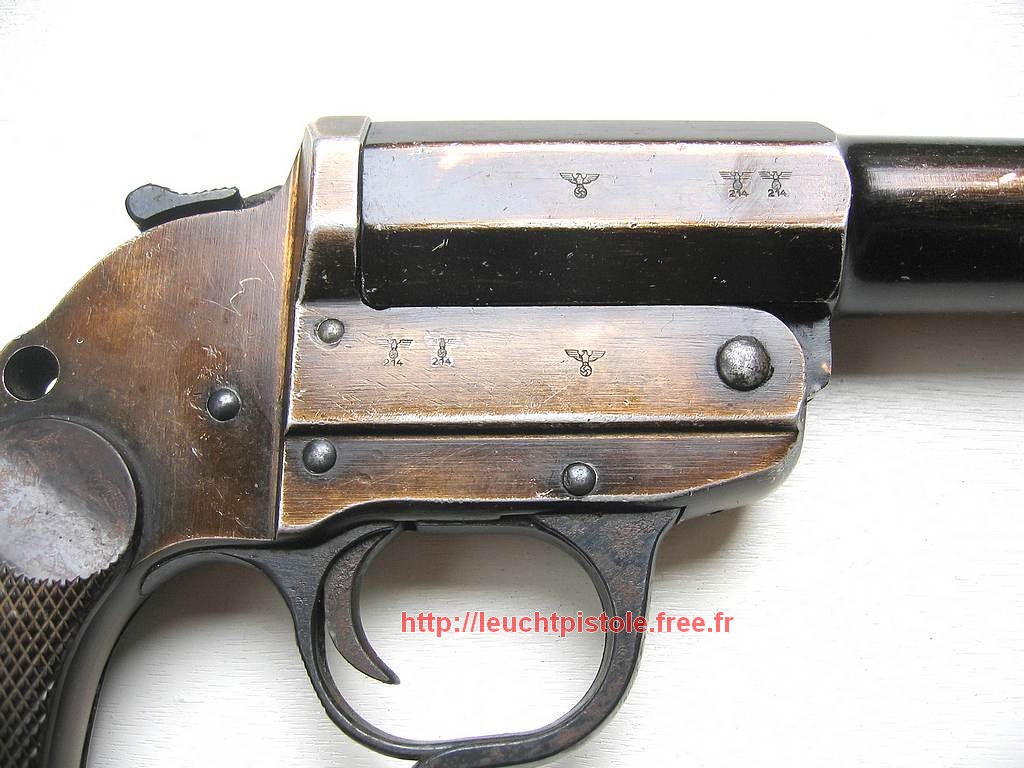
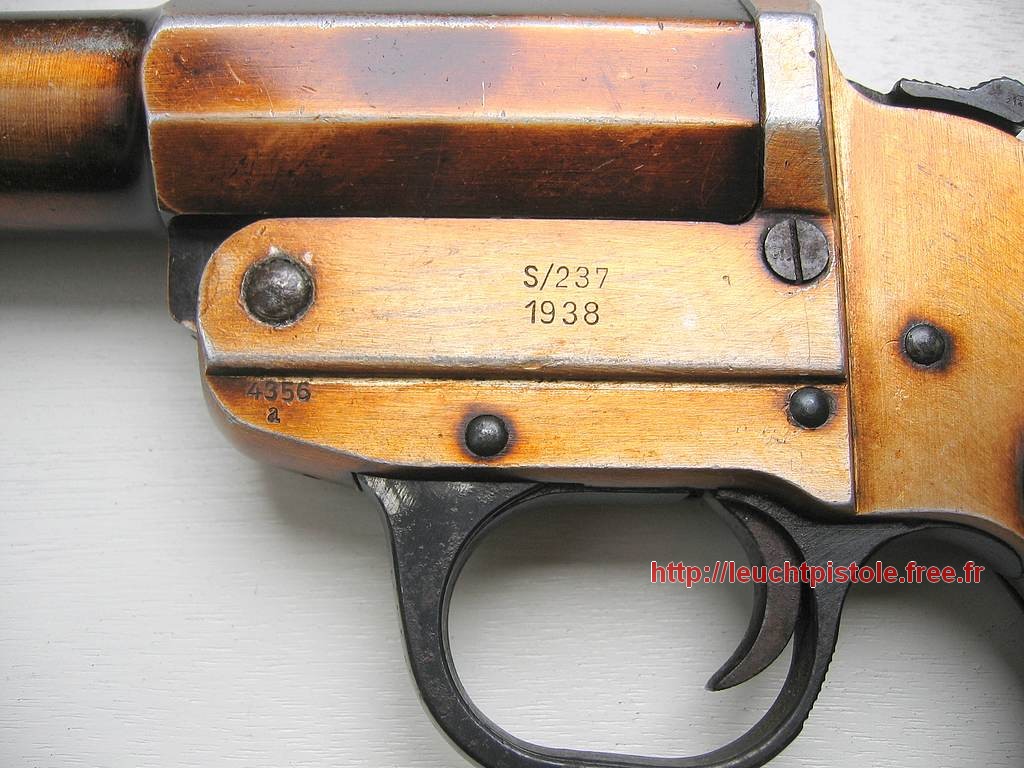
Model identical to the above dated 1938. The code is also S/237.
Anodizing has a better quality or has been better preserved than the
pistol signaler above.
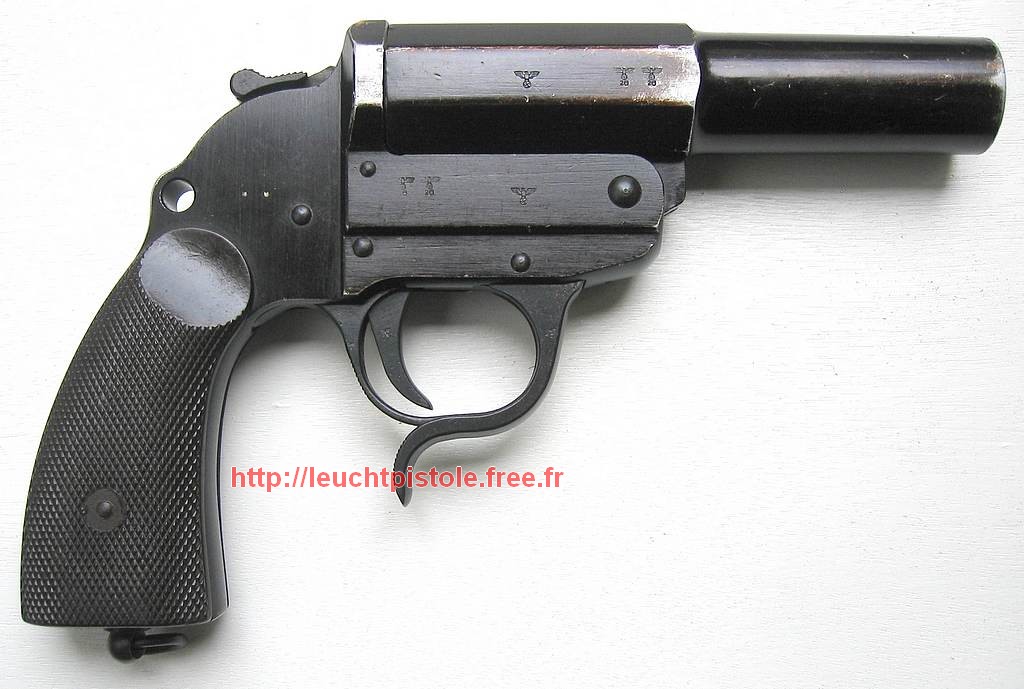
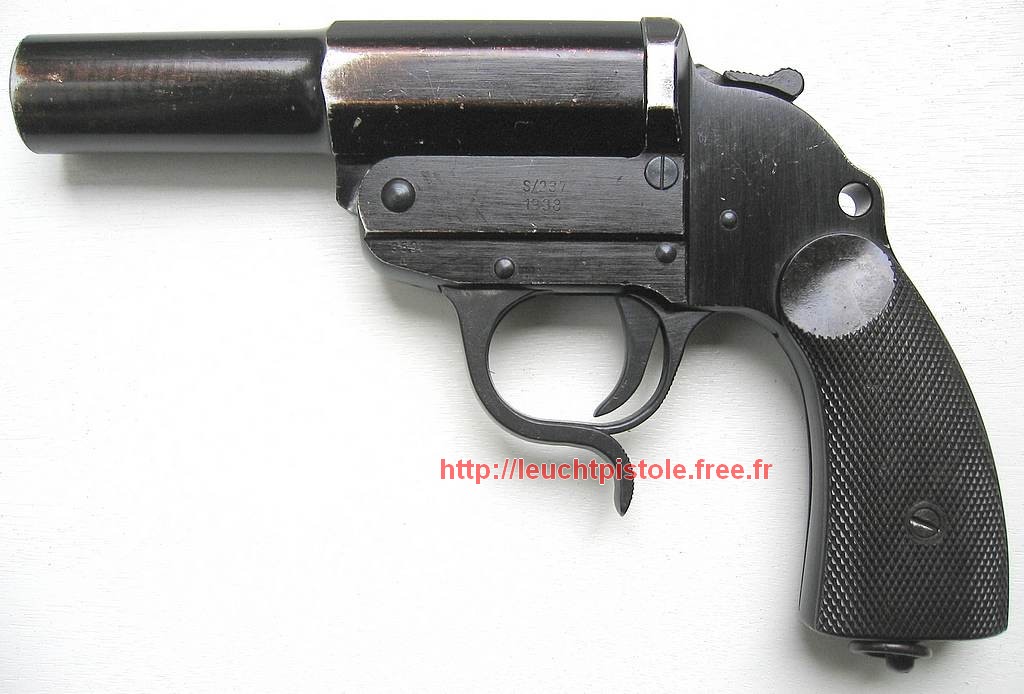
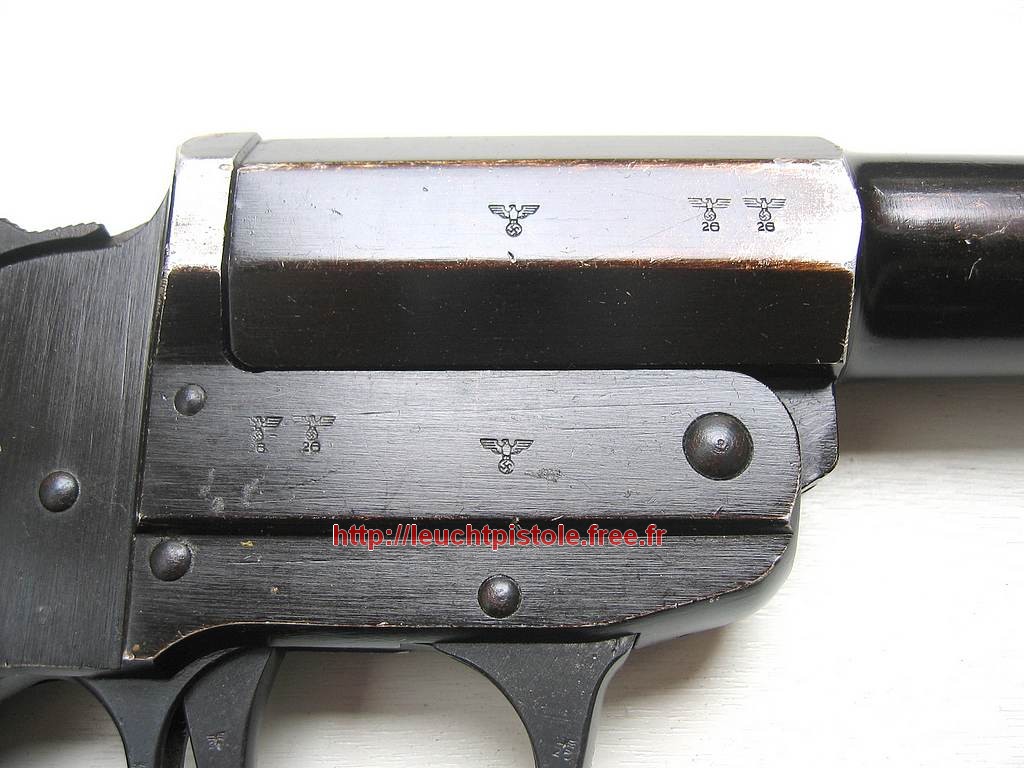
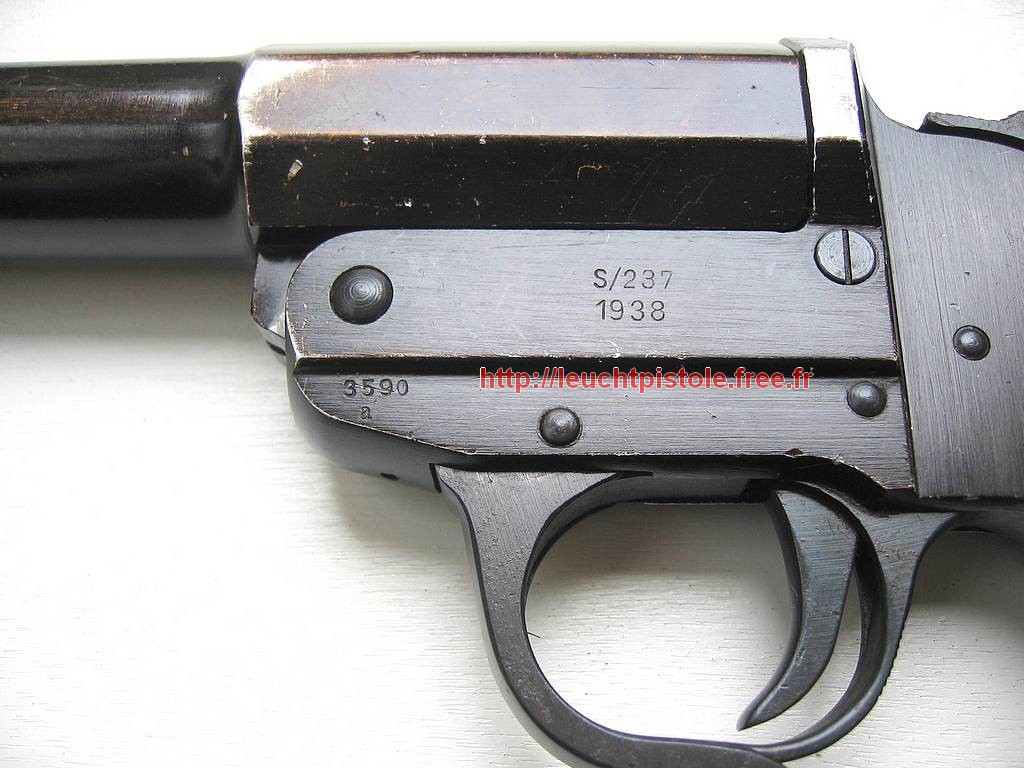
Model identical to the above dated 1937. The code is ERMA-ERFURT.
Model identical to the above dated 1937. The code is ERMA-ERFURT too but anodizing was less resistant.
Modèle 34 used by the Swedish Army
Hybrid model
For example (click on images to view them in their original size):
On the LP above, we observe a triggerguard from a Mod 26 LP (recognizable by its smaller size), a frame of LP manufactured by Walther Mod 34 as indicated in the above banner and complemented by a barrel manufactured by Erma (code AYF) - probably after 1940 because this code appeared after that date.
The assembly is therefore most hybrids. Note the lack of serial number (usually on the frame below the operating axis of the barrel and the barrel substantially at the same location) and the detail of landyard ring missing.
Two explanations may be possible:
- The LP was made into an arsenal from a disparate parts inventory (during the transition between the models for example ..)
- The LP has been assembled by a gunsmith from parts from various spare parts (Vorratskasten provided by Walther on one hand and Erma or other body parts spare parts filled with different manufacturers).
The mystery remains unsolved about the origin of the triggerguard coming from a model 26 LP.


